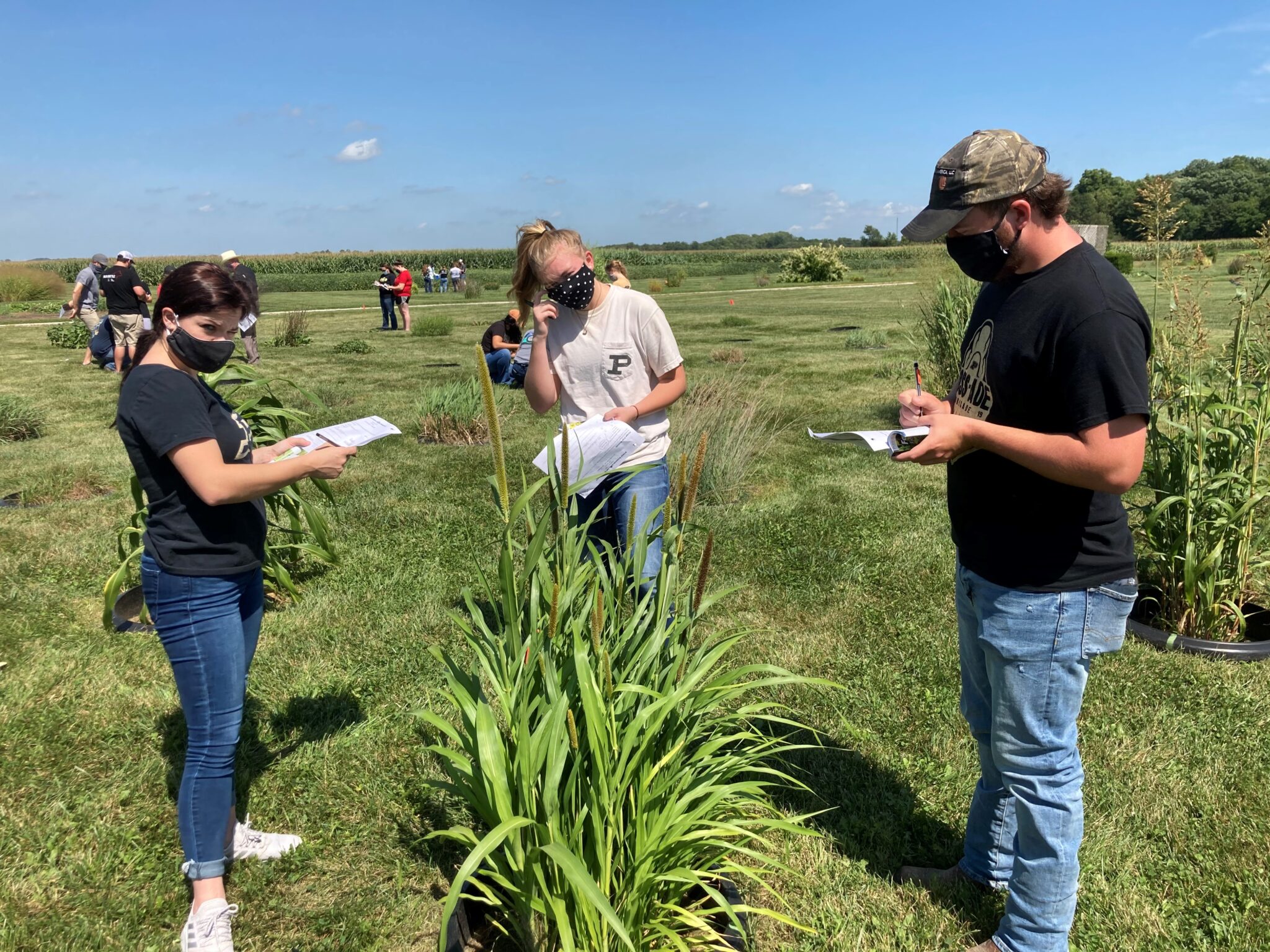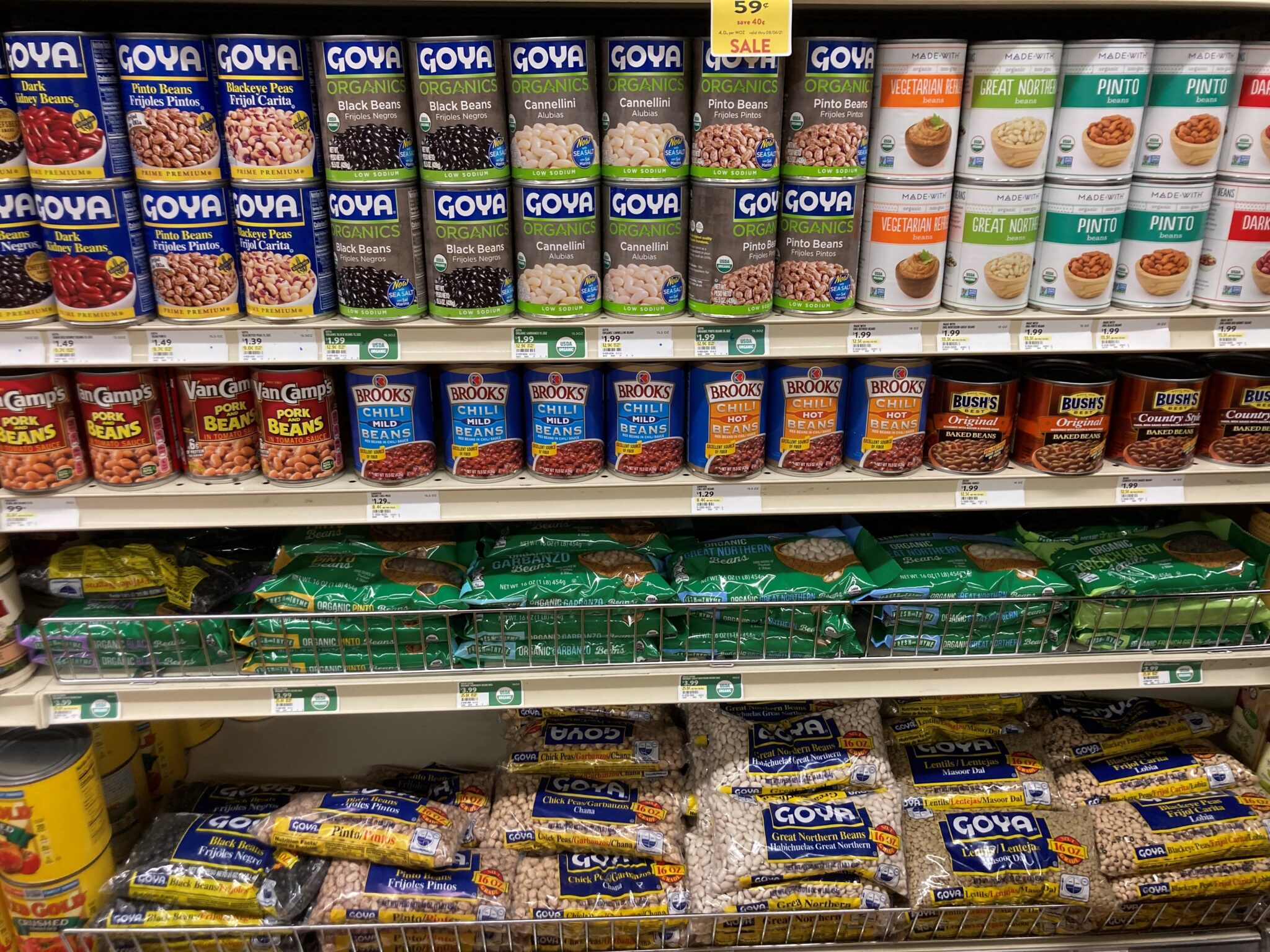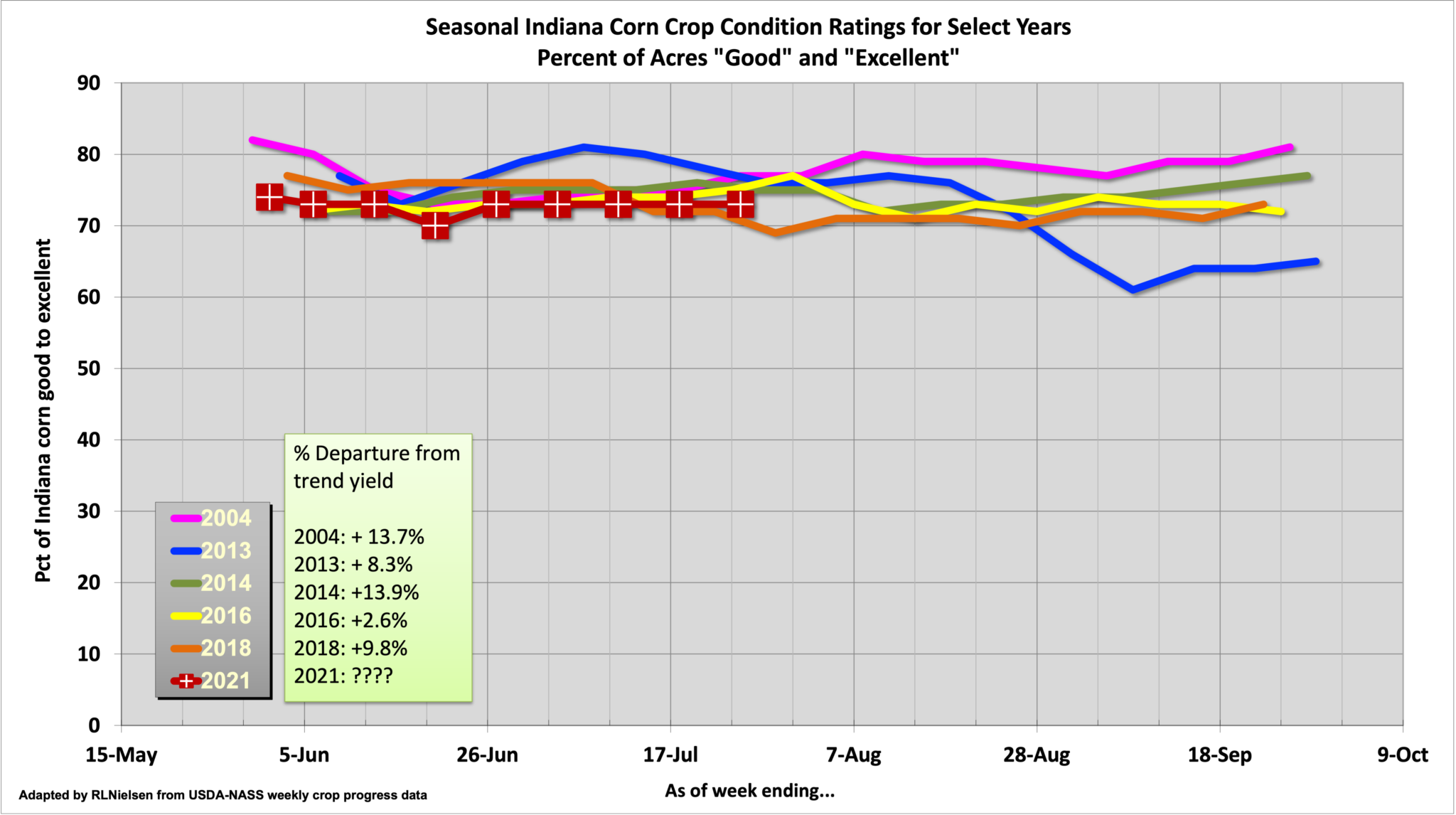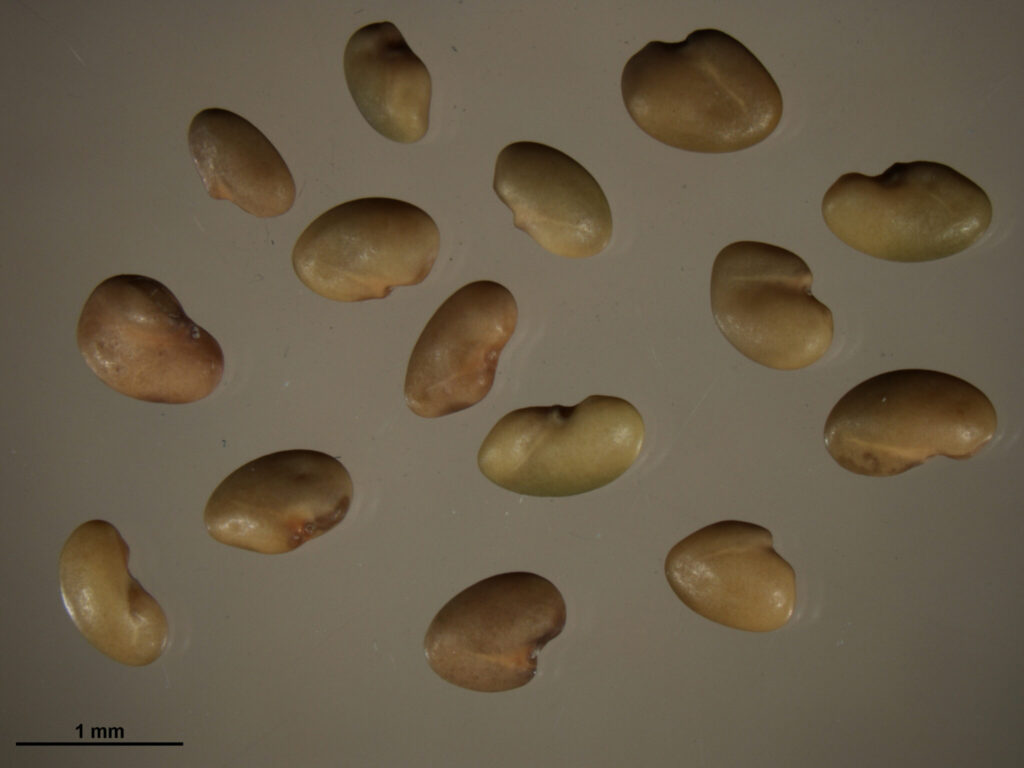
I received a phone call from a shepherd many years ago. He was confused as to why his ewes refused to eat what appeared to be beautiful alfalfa hay.

I received a phone call from a shepherd many years ago. He was confused as to why his ewes refused to eat what appeared to be beautiful alfalfa hay.

Two forage educational events are being held in southern Indiana on August 20 and 21. Preregistration is required for both events.
This six session series focuses on irrigation topics such as irrigation management, irrigation efficiency, new and expanding irrigation projects and a weather and crop update.

The water needs of corn peak in July and taper off in August as we near dent stage.

The heavy rain events and somewhat cooler temperatures prior to this week’s heatwave increased disease pressure in hemp.

I hope you take more time evaluating what forage species and variety of that species should be purchased than the time taken to buy a vegetable at the grocery store. I

The condition of the 2021 Indiana corn crop, as estimated weekly by USDA-NASS, ranks among the top 6 most recent growing seasons dating back to 2004.
On this Purdue Crop Chat Podcast, Purdue Extension Soybean Specialist Shaun Casteel and Corn Specialist Dan Quinn are joined by Darcy Telenko, Purdue Field Crop Extension Plant Pathologist, to discuss diseases that are popping up around the state in both corn and soybeans.

Timely alfalfa seeding is always important to getting an excellent stand, and when seeded late does not have time to develop into a winter hardy plant.

Potato leafhopper (Empoasca fabae) is back on hemp. This migratory species can cause a lot of damage to many different crop species, including hemp.
© 2025 Purdue University | An equal access/equal opportunity university | Copyright Complaints | Maintained by Pest&Crop newsletter
If you have trouble accessing this page because of a disability, please contact Pest&Crop newsletter at luck@purdue.edu.